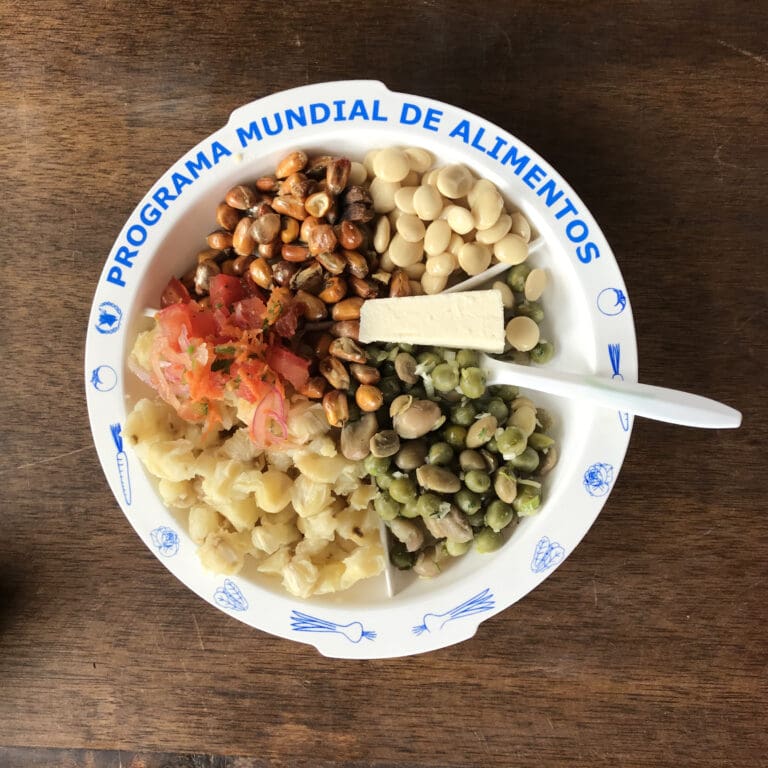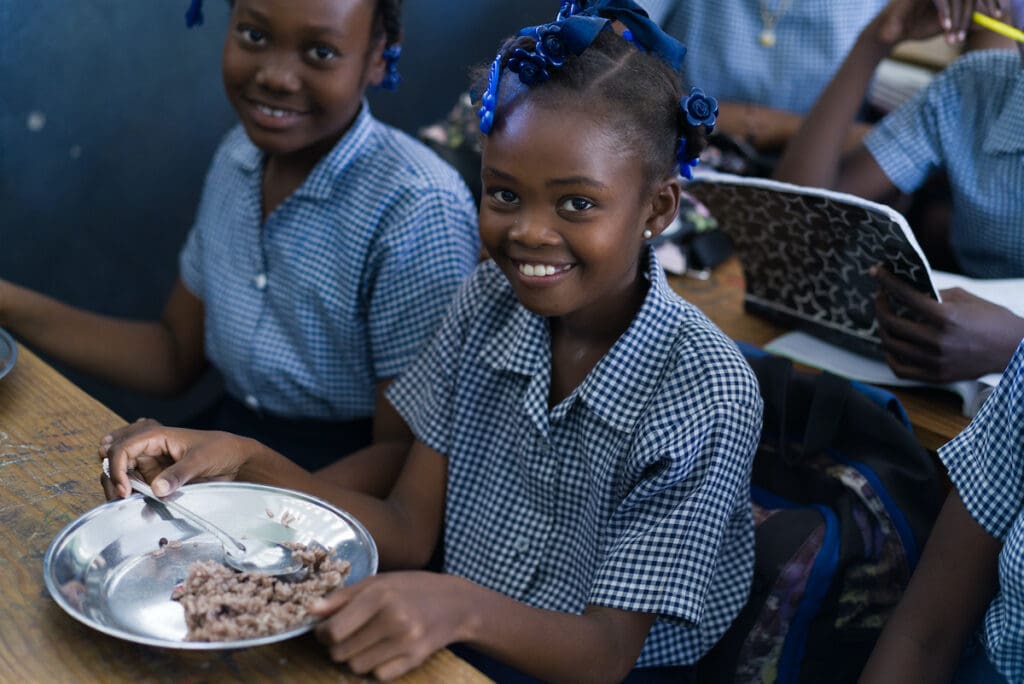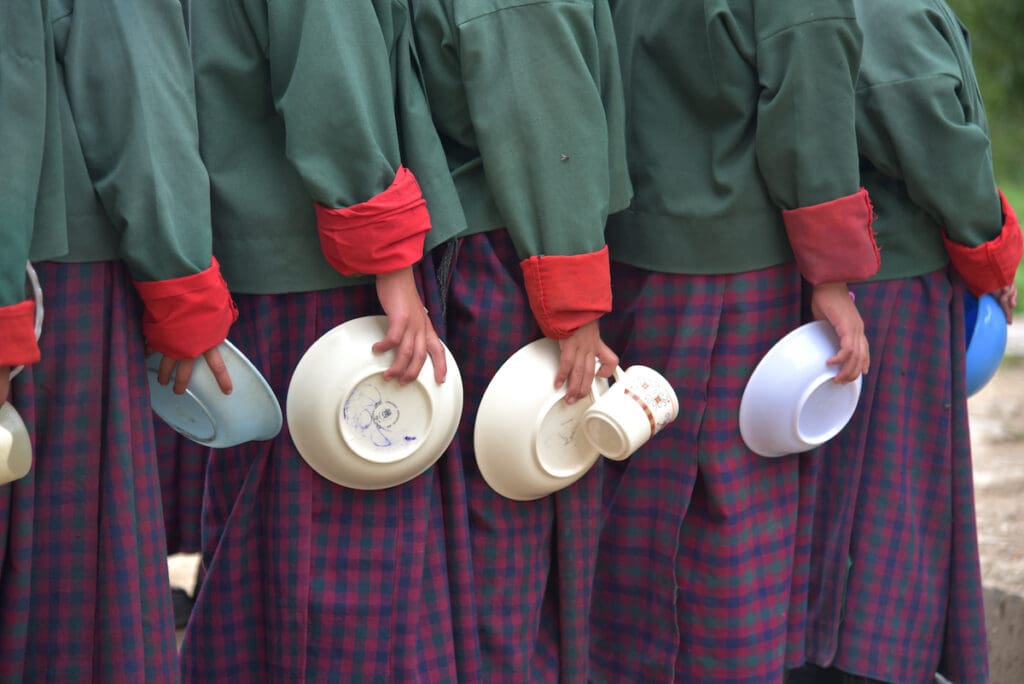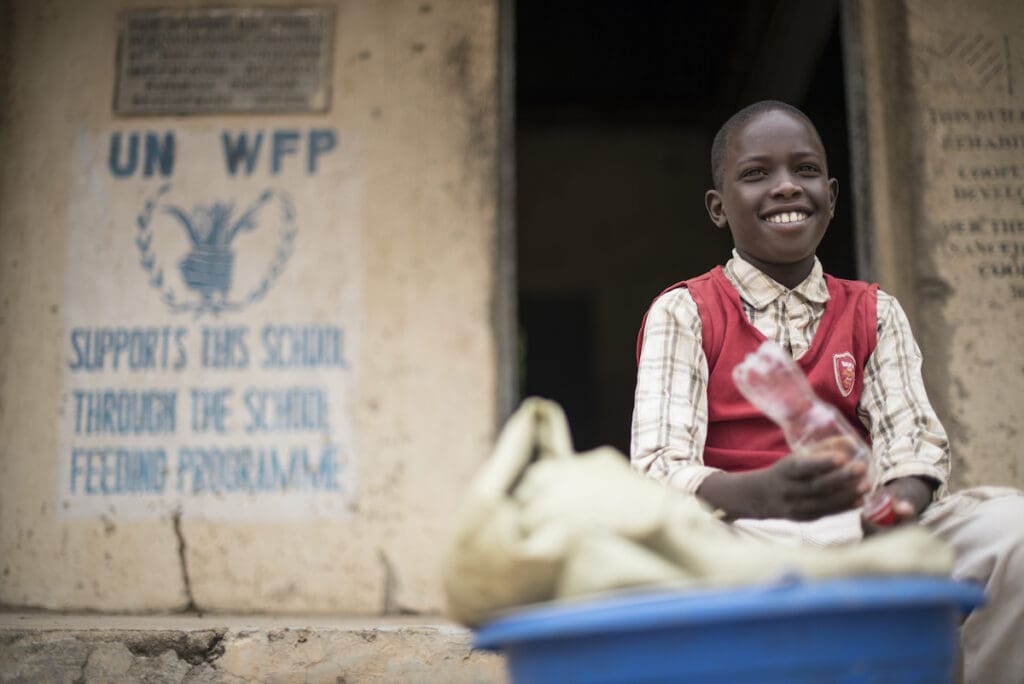This New Online Tool Creates Nourishing, Locally-Sourced School Meals in Minutes

PLUS School Menus software is the first digital solution that optimizes school meals by making them simultaneously more nutritious, cost-efficient and locally-sourced.
The Problem
Around the world, more than 73 million primary school children in 60 low-income countries go to school hungry every day. While those children may already be receiving at least one school meal, it might not always be one that meets their specific nutritional needs.
The increasing obesity epidemic and rapidly changing global diets make the need to influence dietary quality through school feeding even more urgent. We need innovative solutions to support the scale up of School Feeding programs, making sure all vulnerable children have access to nutritious, cost-efficient school meals.

A schoolgirl in Haiti receives daily hot meals thanks to WFP.
The Solution
With PLUS, decision makers now have a user-friendly online tool that supports the design of nutritious, locally sourced and cost-efficient school meals.
PLUS uses a set of databases (food prices and food composition tables) and, through an advanced mathematical algorithm, calculates a “menu” of meals, ensuring nutritional requirements are met using locally-sourced food and seasonal ingredients.
The software underwent a thorough Human-Centered Design (HCD) approach to create its interface. This process enables an extremely user-friendly flow so that anyone, with little or no training, can create school feeding menus in a matter of minutes.

Students line up for lunch at Dawakha Lower Secondary School in Bhutan.
Designing Menus Together
Healthy and well-nourished school children learn better. Ensuring that girls and boys stay in school and are healthy and ready to learn allows them to fully achieve their potential as adults. Very simply: sick or undernourished children cannot attend school and hungry children cannot learn.
School Feeding programs can help get children into school and help them stay there. They provide children with safe and nutritious food, encouraging dietary diversity and healthy eating habits. When purchased locally from small-scale farmers (known as “Home Grown School Feeding”), programs maximize benefits for students and local communities by integrating small-scale farmers into food supply chains and generating profit for local economies.
An initial pilot allowed the United Nations World Food Programme (WFP) to validate two big benefits of the tool:
- First, the tool is able to largely improve and adapt food baskets for school feeding programs. This includes substantial cost savings without reducing quality and the flexibility to adapt to local challenges and eating habits.
- Second, the task of creating menus becomes much easier with PLUS School Menus.
PLUS software was able to calculate new food baskets, bringing large improvements in a very short period of time. The first ever PLUS-designed menu was implemented in the region of Punakha, Bhutan:
It had the same nutrient content as the previous school menu, but was 20 percent cheaper and, simultaneously, increased by 70 percent the amount of food bought from small-scale farmers, all while respecting local eating habits and culture.
The only training the first two users required (a U.N. World Food Programme program officer and a government nutritionist) was a two-hour in-person session and a few remote follow-up calls.

A child in Uganda waits for his name to be called to collect take-home rations distributed by his school.
Where We Go From Here and What We Still Need
In 2020, the PLUS software will go through a thorough enhancement. Partnerships with key development actors will be strengthened and several countries will begin field implementation in a continuous feedback and improvement process. From 2021 onwards, global expansion will start in close collaboration with governments and partners.
The potential of PLUS is already recognized within the humanitarian and development community: The project received a U.N. World Food Programme Innovation Challenge award in 2018 and was selected for the Global Best Practices Award at the World Expo Dubai 2020 in the category “Water, Food and Energy Security.”
Investing in school meals is one of the best tools we have to break the cycle of hunger and poverty. To support this lifesaving work, click here.
This story originally appeared on the U.N. World Food Programme’s Innovation Accelerator blog.




